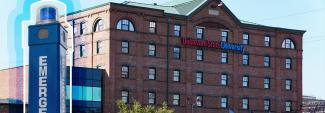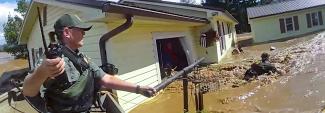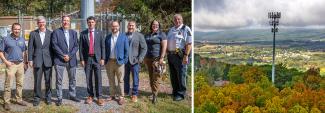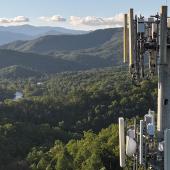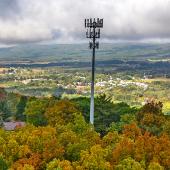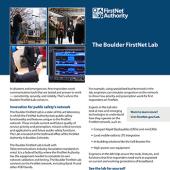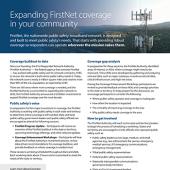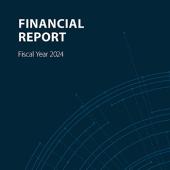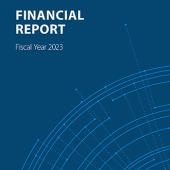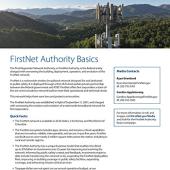At Texas A&M University, two researchers, Dr. Walt Magnussen and Dr. Robin Murphy, are working together to advance public safety technologies. Dr. Magnussen focuses on public safety communications, and Dr. Murphy focuses on ways to use drones to enhance disaster response. They both use FirstNet in their research and training.
Putting new public safety tech to the test
Dr. Magnussen leads a research hub called the Internet2 Technology Evaluation Center (ITEC), which conducts emergency communications research with a focus on interoperability. For the past five years, ITEC has hosted a training exercise called the Winter Institute that brings together first responders and technology leaders to try out public safety technologies in realistic scenarios. The FirstNet network is used at these exercises to test the full ecosystem of public safety devices and services in disaster conditions.
“I’ve been a strong proponent of FirstNet since its inception,” said Dr. Magnussen.
In past years, exercises have simulated a cyberattack and an earthquake. One of the exercise locations is Disaster City, a several hundred-acre training facility with burned-out buildings, rubble piles, collapsed bridges, derailed trains, underground tunnels, and abandoned warehouses. The disaster scenarios are designed and executed by first responders in real-life settings, such as Disaster City, so that responders can more accurately evaluate technologies and identify opportunities for improvement.
Testing drones during the Kilauea volcano eruption
In addition to simulated exercises, Dr. Magnussen and Dr. Murphy’s work has translated into real-world scenarios. As an expert in disaster robotics for aerial, ground, and marine vehicles, Dr. Murphy leads a specialized team that deploys to disaster areas around the country to aid in response. They use drones to evaluate and map the disaster area, find missing persons, and generally go where humans cannot. “Communications, and of course FirstNet, are a huge component of disaster robotics,” said Dr. Murphy.
In one such deployment, Dr. Murphy and the drone team traveled to Hawaii when the Kilauea volcano erupted in 2018. Using small drones and the FirstNet network, they live-streamed the lava flow to the emergency operations center more than 30 miles away. FirstNet provided the connection and bandwidth needed to share quality footage in real time.
The drones provided critical views for first responders. Dr. Murphy explained, “You’re not only getting a view of where the volcano is, but you’re also getting a sense of how bad the sulphur dioxide plumes are—which direction they’re going and which homes will likely be affected in a few minutes.” Having this information enabled emergency managers to make crucial calls on where to place resources and which areas to evacuate.
The drones were also used to monitor the lava flow overnight. This was particularly important because human pilots are prohibited from flying over disaster areas at night due to the risks of crashing. Unmanned aerial vehicles don’t face those same restrictions and can provide vital information that would otherwise be unavailable. In the case of the Kilauea volcano, the drones showed the lava flow was dangerously approaching a geothermal power center. Although the center had already been evacuated, it still housed toxic and explosive materials. Having situational awareness in the moment helped the emergency management team plan and redirect resources to avoid a larger environmental catastrophe.
By supporting this event, Dr. Murphy and her team also captured critical data on how to best leverage drones during disaster response. They observed that targeted use of the drone footage was more helpful than streaming video 24/7. A constant drone feed would have been a distraction and not helpful to the emergency management team in making informed decisions. Seeing the lava’s path in the moments it approached the power center gave emergency managers the data they needed, when they needed it.
Advancing tech for disaster response
With Dr. Magnussen and Dr. Murphy’s work to advance disaster response and recovery, the public safety community stays current with the next generation of public safety technologies. “The services that we’re doing are bleeding edge,” said Dr. Magnussen. “But we need to figure out how to get these services in the hands of the first responders sooner rather than later.”



